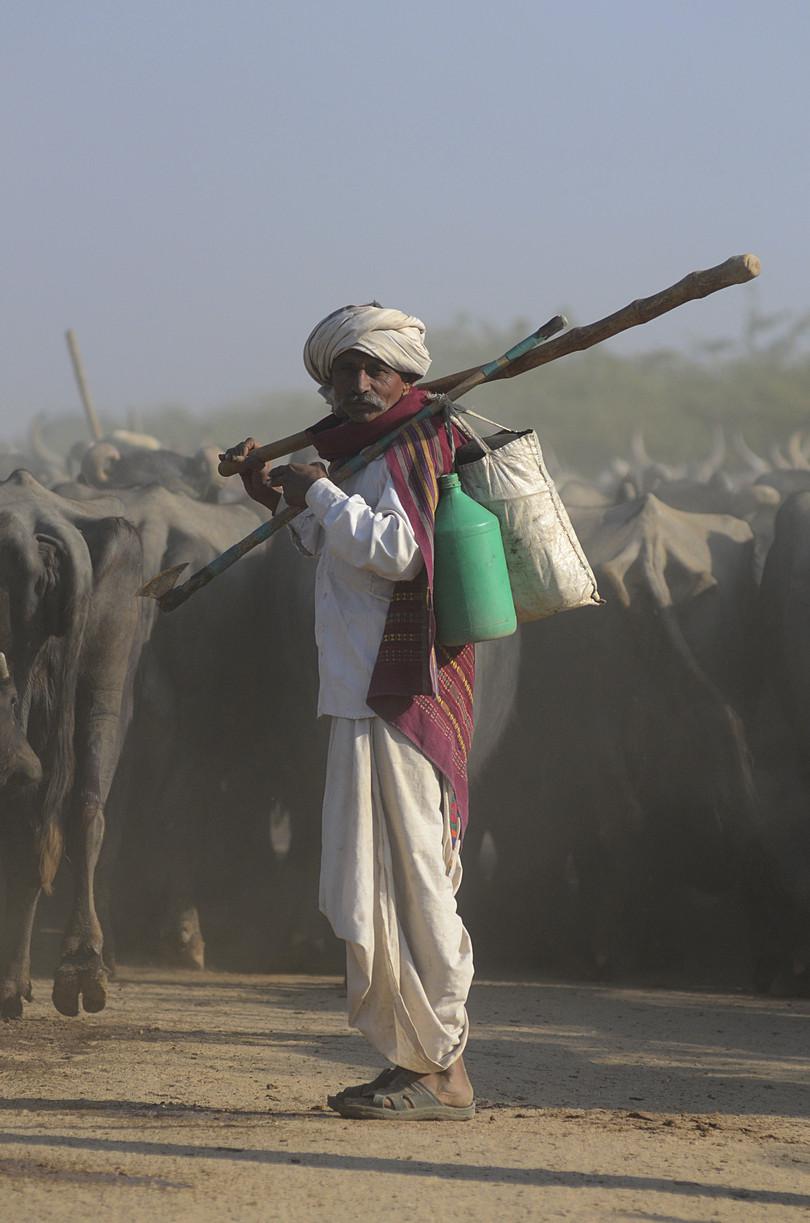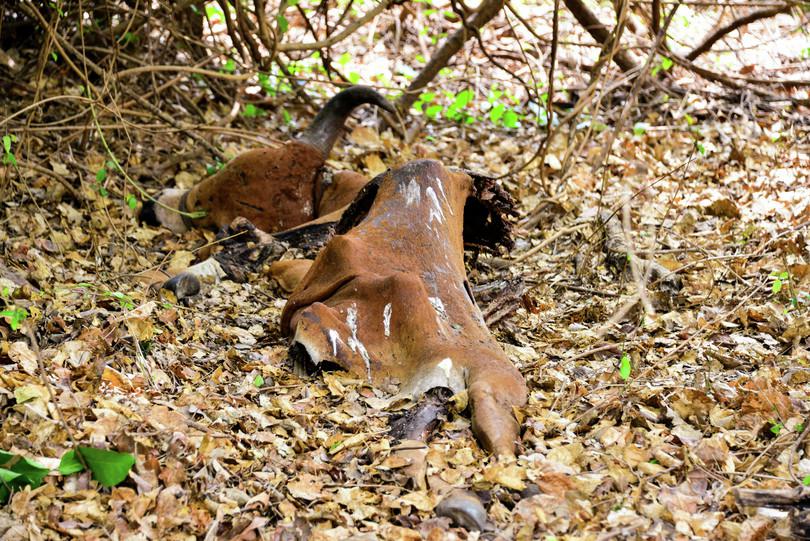Research highlights
Most textbooks are a compilation of information from different sources. Primary sources are often introduced to students much later, but this means that students do not get exposed to how science is practised. To address this issue, some of the chapters in iThink Biology include an annotated scientific publication within a ‘Research highlight’ feature. These research papers have been written by experienced scientists or academics and may be challenging to grasp on your first try. To guide you through the content, we have left annotations (or comments) in each of the papers. Annotations are typically explanatory notes that clarify a concept, highlight important claims or encourage you to think critically. Pay close attention to these annotations to engage with the content and learn how a researcher investigates and writes about different topics of academic interest.
All of these papers are based on work that has been done in India that we have used, in part, as case studies in the chapters of this book. Keep in mind that most of the publications are products of many months to years of work, and often by many people. Therefore, each paper is dense, and requires some effort to read and understand. Often there will be concepts you have to look up further, so some perseverance is required, but it is a rewarding process!
Research Highlights in iThink Biology
A3 Urbanscapes:
B1 Malaria: Rapid Diagnostic Testing of Malaria
B2 Rotavirus: Pre-vaccination surveillance
D1 Felines: Living with lions
D2 Figs: Fig wasps’ ovipositors
Research Highlight Leopards and the balance of nature in a city
Let’s investigate the example of one of the fastest-growing metro cities in India and the world, Mumbai. Mumbai has the largest population of stray dogs globally (estimated at 96 000 animals), which has risen due to human tolerance and hundreds of tons of food waste that accumulate within the city. However, Mumbai is also close to Sanjay Gandhi National Park which houses approximately 35 leopards that often venture into the city. A very interesting analysis has shown that the top carnivore plays a crucial role in regulating the balance of trophic levels even in an urbanscape. Based on the current statistics on dog bites and rabies, Braczlowski et al.’s study highlighted fascinating findings.1 The researchers showed that leopards (the top carnivore in this urban area) could save up to 4000 medical treatments and 90 human lives per year. The researchers estimated that in monetary terms, such an estimate could reach as high as US$ 200 000 per year, reflecting an important ecosystem service provided by leopards. With this realisation about the intricacies of the food web and how all organisms are interconnected in this web of life, be aware of this ‘balance of nature’2 and the role we play in it.3
Research highlight Rapid diagnostic testing of malaria
In many areas of India, access to health care, infrastructure and training for health care workers is limited. Using a microscope to diagnose malaria requires a microscope and someone who is trained in preparing the sample and identifying the parasite in a blood smear.
- rapid diagnostic test
- Quick and simple tests usually used to detect parasite-based infections.
- point-of-care testing
- Testing that occurs on-site, where the patient is.
- mouth swab
- Collection of saliva and epithelial cells from inside the cheek to test for the presence of pathogens or other substances.
Another diagnostic tool is a rapid diagnostic test (RDT), which can be used at point-of-care, meaning that it does not require a blood sample to be sent to a lab for further analysis. This is helpful to people living in remote areas. The RDT is a quick, efficient and accurate method for screening for malaria. If the disease can be diagnosed quickly, treatment starts early and the patient recovers faster. Non-invasive ways of obtaining the patient’s sample, such as a mouth swab or urine sample, are advantageous as they do not require highly trained personnel.
- immunoassay
- A test that measures presence and concentration of antigens through the use of antibodies.
How do RDTs work? The most common RDTs are in the form of an immunoassay, which involves detecting the interaction of an antibody with an antigen. The antibody is specific to the pathogen. The antigen–antibody interaction is linked to some type of visible detector. For a better understanding of what an antibody is, refer to section B1.3.
![The image shows how components of a blood sample travel across a sheet with three bands containing antibodies and colloidal gold, a detector molecule. Antigens (Ag) in the blood will attach to the mobile antibodies (Ab) in the first band and move forward. The second band, called the test band, has stationary antibodies, to which some of the Ag-Ab complexes bind. The remaining complexes travel further and attach to the stationary antibodies in the control band.]()
Figure B1.17 A rapid diagnostic test, testing for the presence of disease with the help of capillary flow and antigen–antibody binding.
- immunochromatographic antigen detection (lateral flow test)
- A test that uses the principle of capillary flow, by which antigen–antibody complexes can migrate across a surface, to test for presence of antigens.
Figure B1.17 shows an example of an RDT that is an immunochromatographic antigen detection test. What does this long name mean? Study the detailed steps of the test below.
- lysed
- Broken (or burst) cell.
- chromatography
- A technique used to separate components of a mixture by allowing them to flow across a surface.
- Cells from a patient’s fluid sample are lysed open and allowed to run onto the RDT strip. You can see the sample moving in Figure B1.17. This process is known as chromatography.
- If the sample contains the parasite antigen, as it travels, an antibody linked to a detector molecule (usually something coloured) will be picked up along with the sample. Now the antigen (Ag) is complexed with the labelled antibody (Ab).
- The sample continues to move past the first band, which is the test band. If the sample contains the antigen, the Ag-labelled Ab will be captured on the test band by the pathogen-specific antibodies that are fixed on the band.
- To ensure that the test sample migrated properly, a second band, the control band, is found further from the test band. As the sample crosses the control band, the antibody will be captured, also colouring the control band.
- By the end of a prescribed time period, two coloured bands indicate a positive diagnosis. If only the control band is coloured, it indicates a negative diagnosis. If only the test band is coloured, but not the control band, the test is invalid.
Pregnancy tests and even point of care tests for Covid-19 rely on the same principle as described above.
- cerebrospinal fluid
- A colourless body fluid found in and around the brain and spinal cord that cushions the brain from sudden mechanical shocks.
In India, the most common RDT for malaria uses HRP2 as a target antigen. HRP2 is a protein that is found in the cytoplasm of the parasite. The protein is also released into the host’s body fluids such as blood, cerebrospinal fluid and urine. HRP2 is not an essential protein for parasite survival. While the HRP2 target antigen has been used successfully for malaria diagnosis, it is limited in its scope in India for two reasons: a) HRP2 is present only in P. falciparum, so other species cannot be detected; and b) since HRP2 is not essential, several studies have identified P. falciparum strains in which the HRP2 gene has been lost (or deleted) over some generations.4 These reasons highlight the need to search for another antigen that can be used to detect all species of Plasmodium found in India.
The guided paper by Amreen Ahmed et al.5 (ICMR-National Institute of Research in Tribal Health in Jabalpur) identifies one antigen (glutamate dehydrogenase) that has the potential to be used for RDTs for malaria in India. The article is annotated to facilitate the reading of this work. As you read through the work, make note of how this journal article is organised. How do the authors introduce the problem they are trying to address?
Research Highlight Pre-vaccination surveillance
If a vaccine successfully reaches a clinic after being thoroughly tested for safety and efficacy, how do we assess the success of the subsequent vaccination programme? What should the measures of success be? Should we expect to see a complete eradication of rotavirus-derived illnesses (as we have seen in the case of smallpox), or an overall reduction in the number of cases? What percentage reduction would be enough for us to call the vaccination programme a success?
Rotavirus has been classified into 10 different species (A–J), which are themselves subclassified into various types based on the genotype. It is therefore important to identify whether there is a diversity in the response to different types of rotavirus.
To answer any of these questions it is important to have a baseline quantitative measure of the incidence of illnesses and deaths associated with any particular rotavirus types before the vaccine is introduced. This is called pre-vaccination surveillance. Once we have baseline data, we can evaluate the efficacy of the vaccine. A pre-vaccination surveillance was conducted between 2005 and 2016 in a multi-centric study of the incidence of rotavirus.6
This study tested nearly 30 000 stool samples for rotavirus infection from 28 sites across India. Each sample was tested for the presence of rotaviral infection. The genotypes of a subset of these samples was also determined to identify the rotavirus strain. The study essentially measured the disease burden of rotavirus before the introduction of the vaccine. We will study the publication that reports on the results of this surveillance study.
DownloadDownload annotated paperOnce you have read through this paper, you will be better equipped to analyse epidemiological data in the next section.
Research highlight Living with lions
A research team led by Yadavendradev Jhala and Kaushik Banerjee examined the economics of coexistence between the only existing population of Asiatic lions and the indigenous pastoralist community in the Gir forest of Gujarat.7 Their study was based on the Maldhari (livestock holders) community which lives inside the forest buffer zone. The community often experiences human–wildlife conflicts, where their livestock is predated upon by lions (Figure D1.13).
As a solution, the Indian Government initiated a compensation scheme that has helped the community in many ways. Based on prior knowledge of the forest ecosystem and the pastoral community, researchers studied the population of lions in areas with and without the presence of the Maldharis and their livestock. They found that livestock comprised 25–42% of the lion’s diet, and the compensation scheme reduced the capital loss to this community by 64%. They suggest that this association might instigate tolerance instead of atrocities towards wildlife. You can read about the various approaches and methods the researchers employed to come to such a conclusion in this annotated paper.
DownloadDownload annotated paper![Indigenous people and their cattle inside and around the Gir forests of India.]()
Figure D1.13a A Maldhari in typical attire with cattle on the road.
Copyright Lars Klausen Hald
![Indigenous people and their cattle inside and around the Gir forests of India.]()
Figure D1.13b A typical Maldhari ness (hut in the local language) inside the forest area. The front side of the ness is made into a cattle enclosure.
Copyright Tathya Macwan
![Indigenous people and their cattle inside and around the Gir forests of India.]()
Figure D1.13c A cow owned by a Maldhari that has been preyed upon by a lion, inside the Gir National Park.
Copyright Tathya Macwan
Research Highlight Fig wasps’ ovipositors: how structure mirrors function
Ghara, Kundanati and Borges studied the ovipositor structure of a seven–member parasitic wasp community in Ficus racemosa syconia.8 They were investigating the relationship between the structure of the ovipositors of wasps and the stage of development of the fig fruit on which they laid their eggs. The researchers developed a hypothesis and made predictions based on the natural history of the wasp community and their prior knowledge of the system.
They hypothesised that the stage of development of figs on which wasp species oviposit will influence the hardness of their ovipositors. They made two predictions:
- sclerotisation
- The process of hardening the cuticle of arthropods by cross-linking proteins.
- species that oviposit on softer, smaller/younger figs or enter the syconia early should have soft ovipositor tips with little sclerotisation.
- Wasps that oviposit on larger or developmentally mature and tougher figs should have harder ovipositor tips with more sclerotisation.
- scanning electron microscopy
- A type of microscopy that bombards a beam of electrons against the surface of a sample, producing an image of the sample.
They used scanning electron microscopy to study the structure of the ovipositors of the entire wasp community of the fig Ficus racemosa. They also measured the force required to penetrate the syconium for each species of wasps. Read about the various techniques the researchers have employed to find this out in this paper.
DownloadDownload annotated paperResearchers found that the ovipositor structure matched the functional requirement of accessing its host.
-
Braczkowski, AR, O’Bryan, CJ, Stringer, MJ, Watson, JEM, Possingham, HP and Beyer, HL, ‘Leopards Provide Public Health Benefits in Mumbai, India’, Frontiers in Ecology and the Environment 16, no. 3 (2018): 176–182, doi: 10.1002/fee.1776. ↩
-
Pimm, SL, ‘The Balance of Nature? Ecological Issues in the Conservation of Species and Communities’ (Chicago: University of Chicago Press, 1991). ↩
-
Simberloff, D, ‘The “Balance of Nature”: Evolution of a Panchreston’, PLOS Biology 12, no. 10 (2014): e1001963, doi: 10.1371/journal.pbio.1001963. ↩
-
Poti, KE, Sullivan, DJ, Dondorp, AM and Woodrow, CJ, ‘HRP2: Transforming Malaria Diagnosis, but with Caveats’, Trends in Parasitology 36, no. 2 (2020): 112–126, doi: 10.1016/j.pt.2019.12.004. ↩
-
Ahmad, A, Verma, AK, Krishna, S, Sharma, A, Singh, N and Bharti, NS, ‘Plasmodium Falciparum Glutamate Dehydrogenase Is Genetically Conserved across Eight Malaria Endemic States of India: Exploring New Avenues of Malaria Elimination’, PLOS ONE 14, no. 6 (2019): e0218210, doi: 10.1371/journal.pone.0218210. ↩
-
Giri, S et al., ‘Diversity of Rotavirus Genotypes Circulating in Children < 5 Years of Age Hospitalized for Acute Gastroenteritis in India from 2005 to 2016: Analysis of Temporal and Regional Genotype Variation’, BMC Infectious Diseases 20, no. 1 (2020): 740, doi: 10.1186/s12879-020-05448-y. ↩
-
Banerjee, K et al., ‘Living with Lions: The Economics of Coexistence in the Gir Forests, India’, PLOS ONE 8, no. 1 (2013): e49457, doi: 10.1371/journal.pone.0049457. ↩
-
Ghara, M, Kundanati, L and Borges, RM, ‘Nature’s Swiss Army Knives: Ovipositor Structure Mirrors Ecology in a Multitrophic Fig Wasp Community’, PLOS ONE 6, no. 8 (2011): e23642, doi: 10.1371/journal.pone.0023642. ↩




